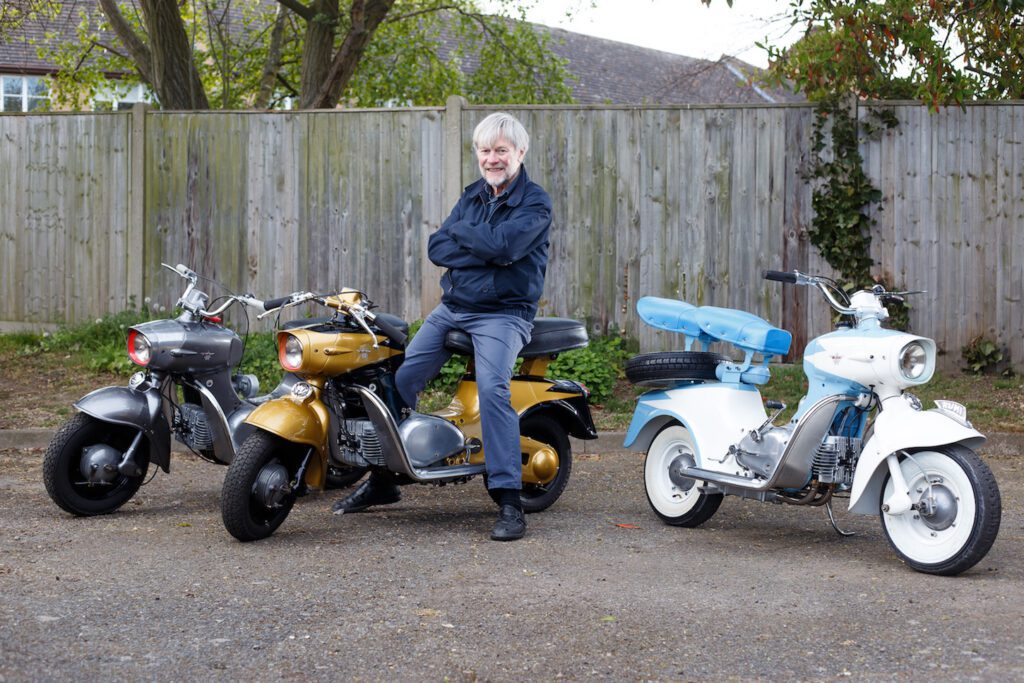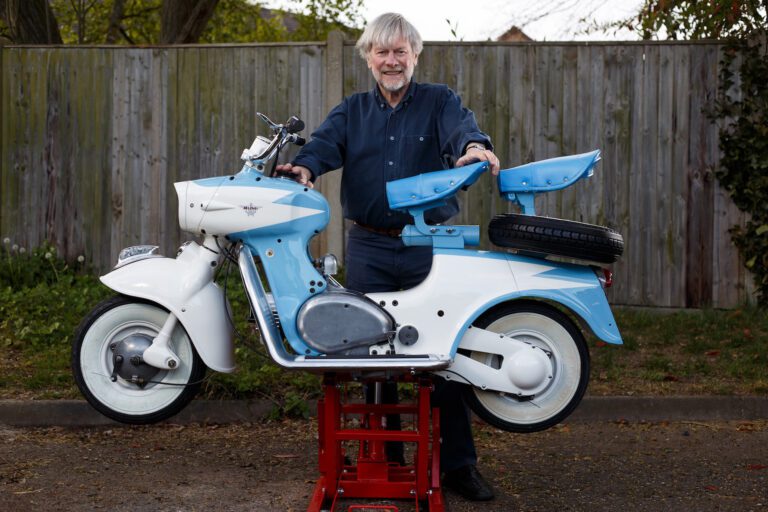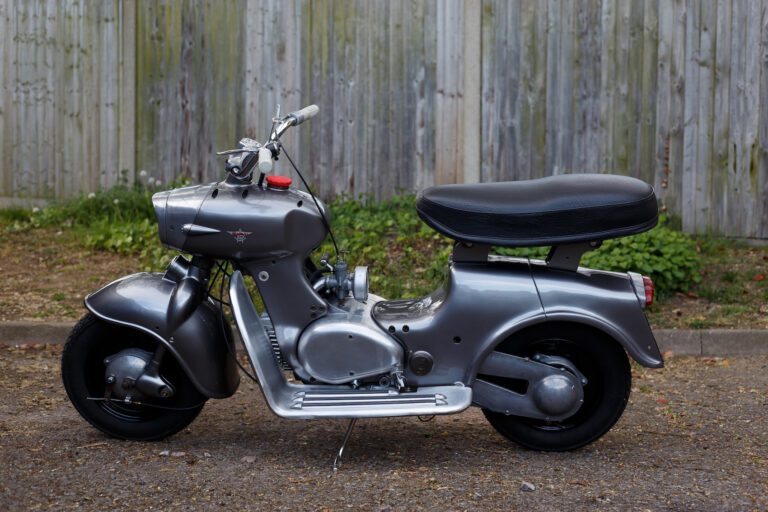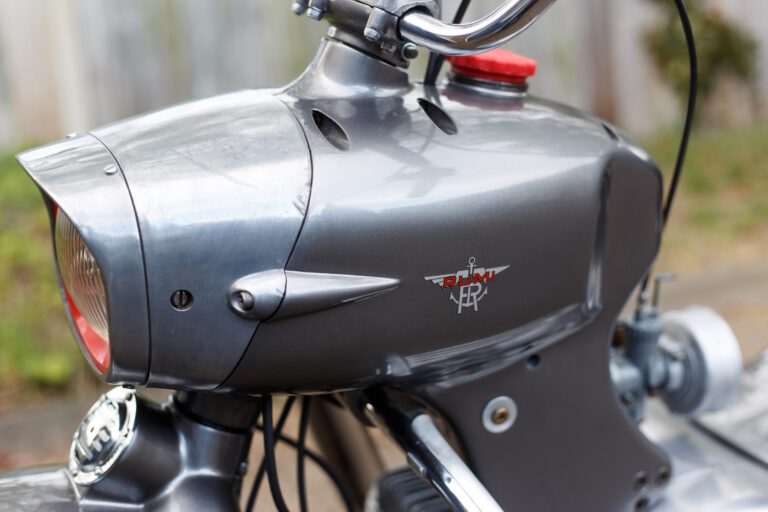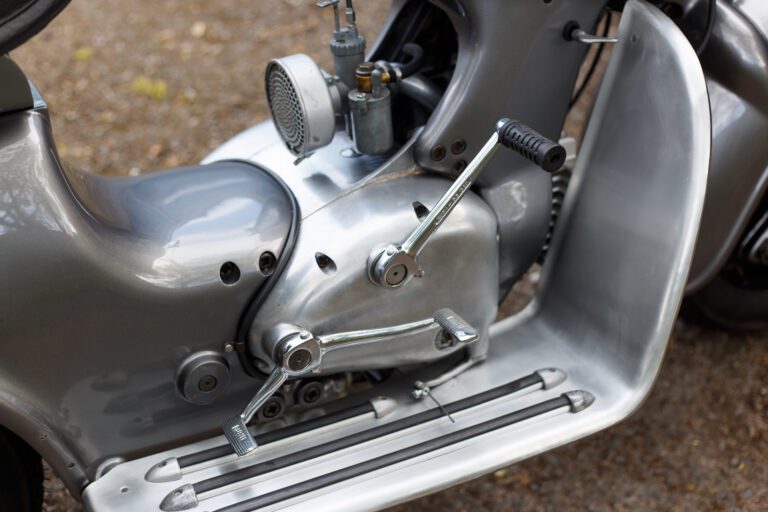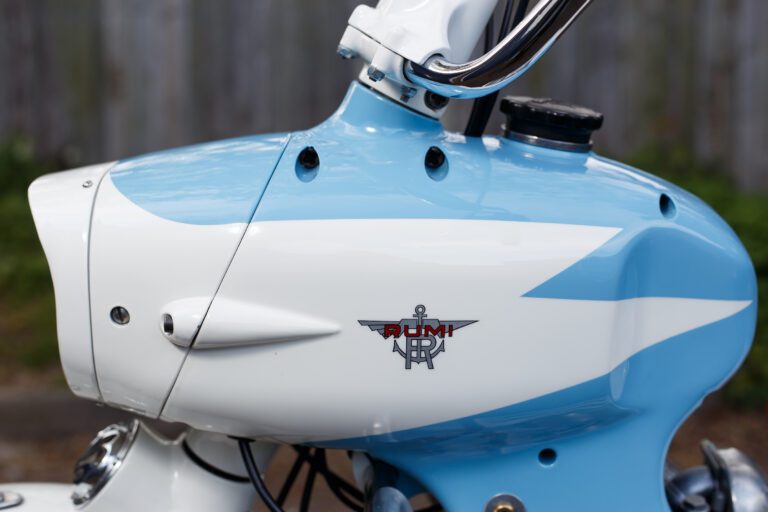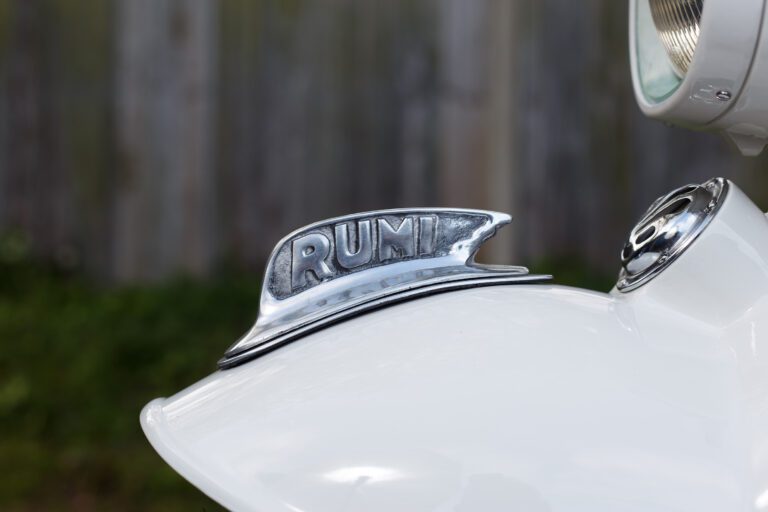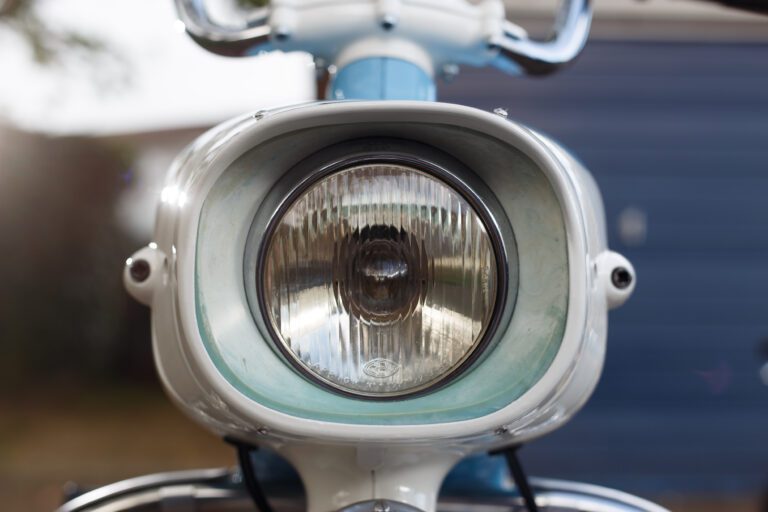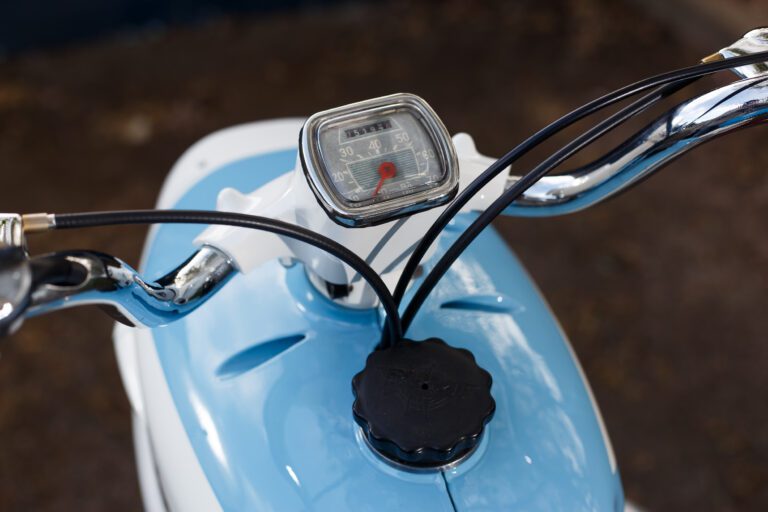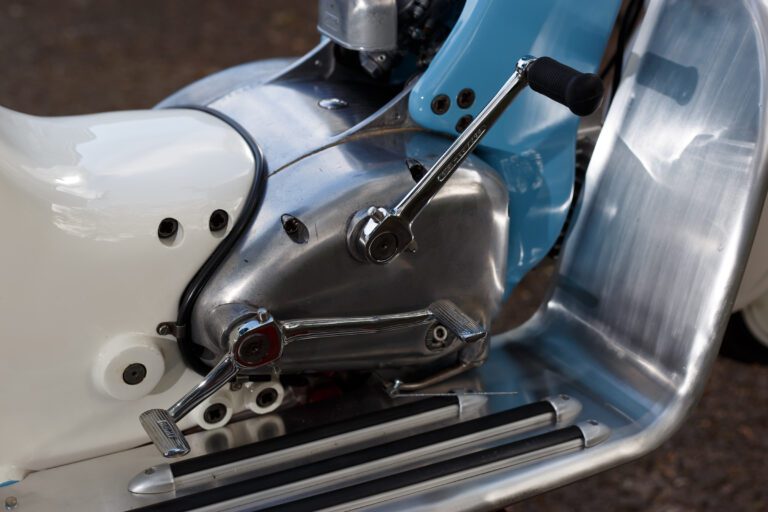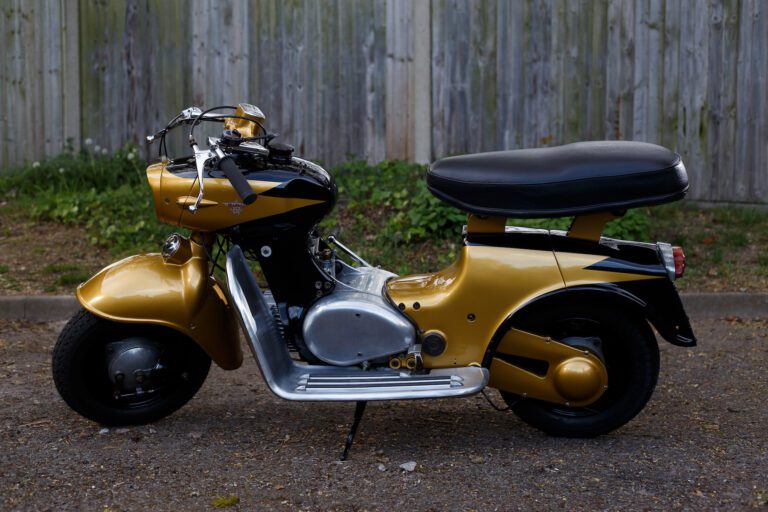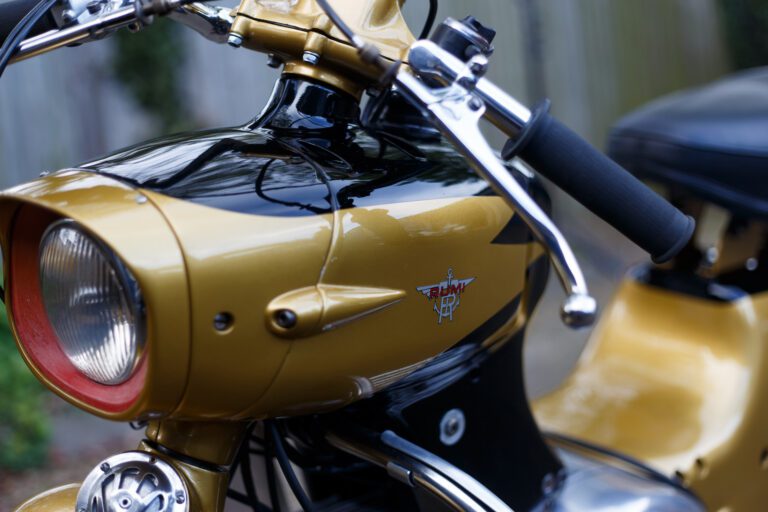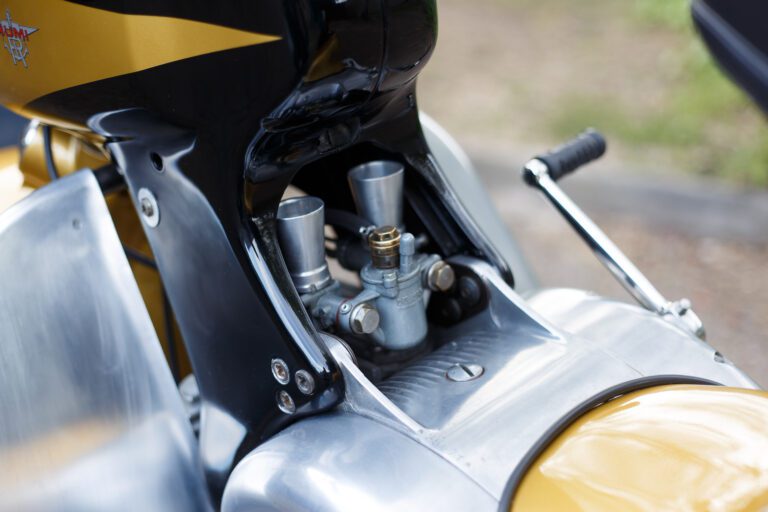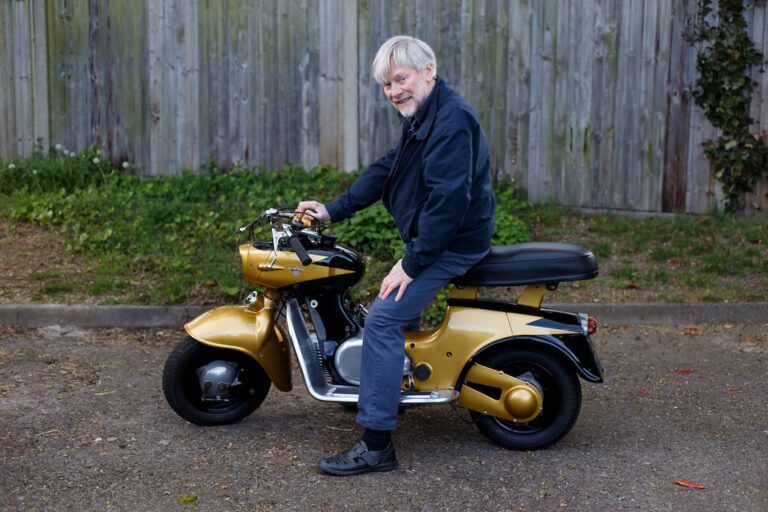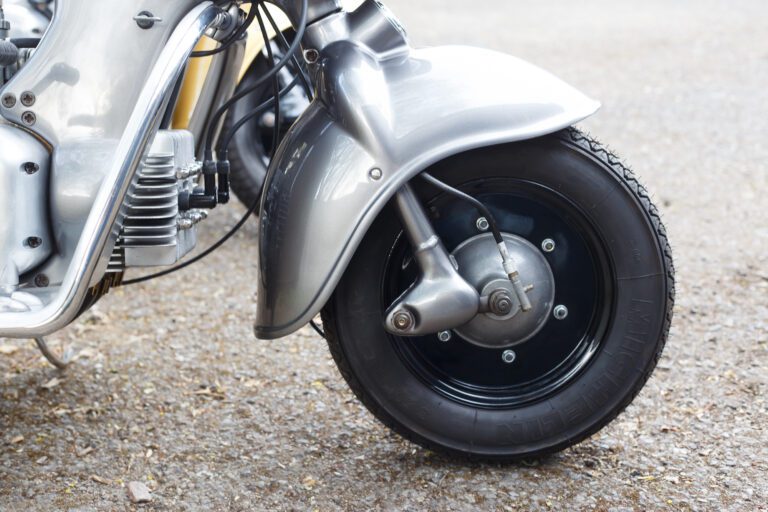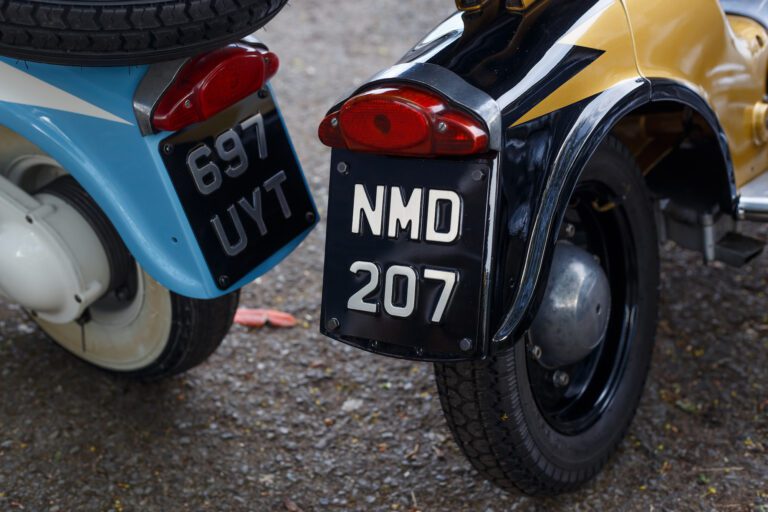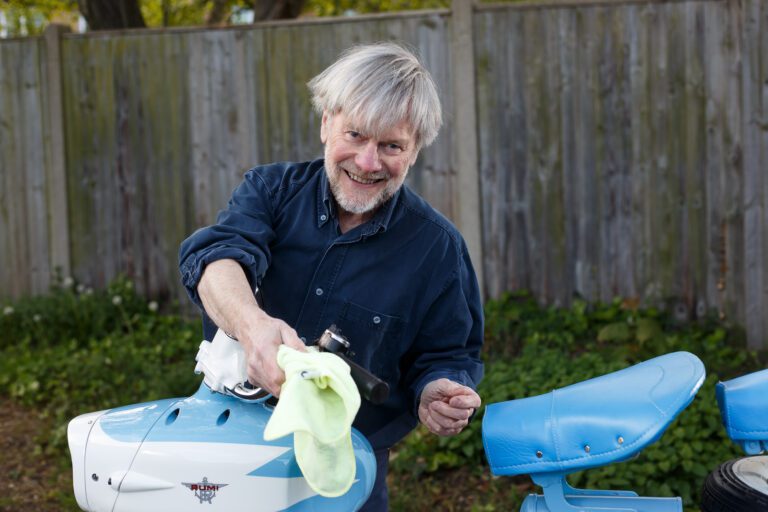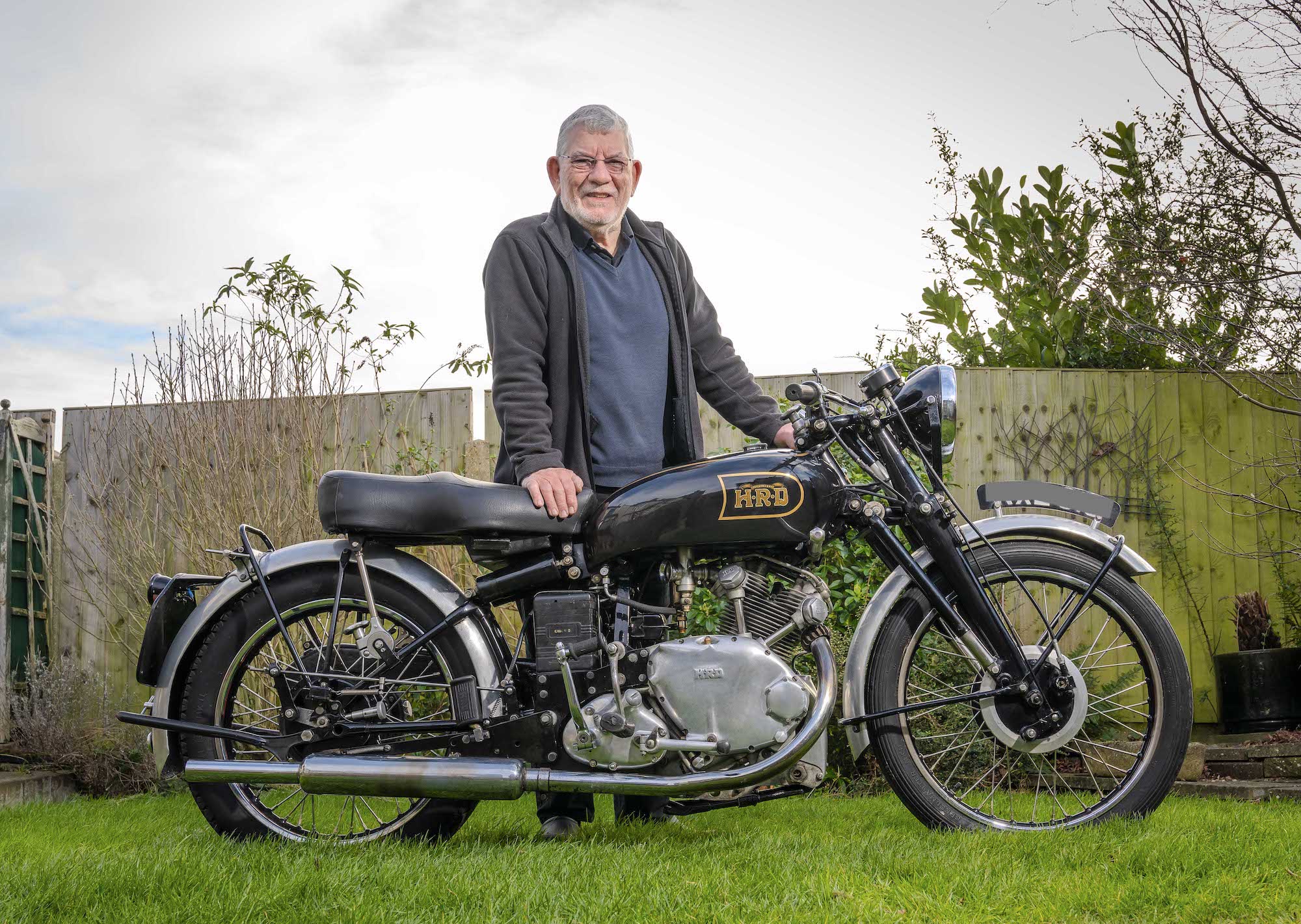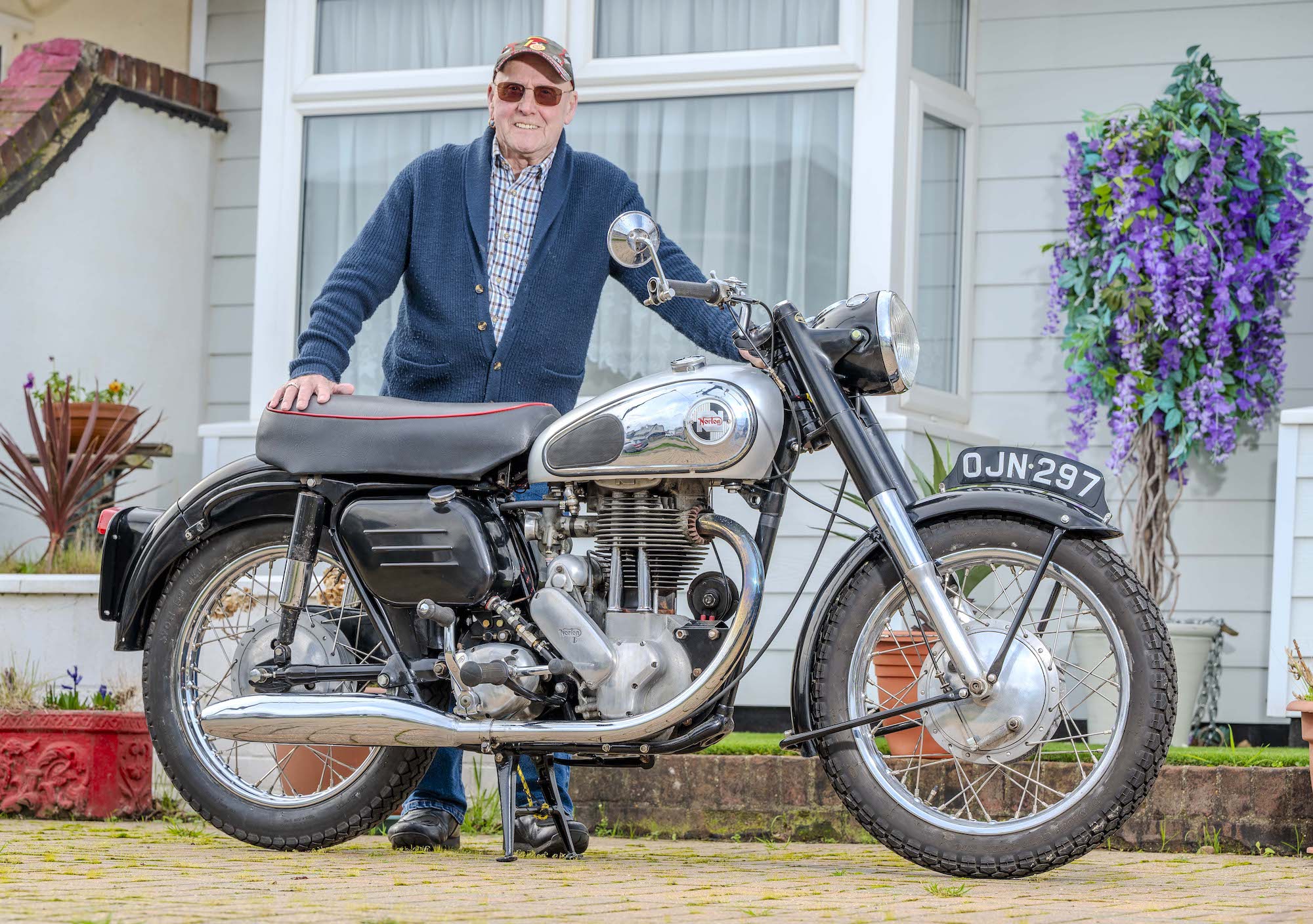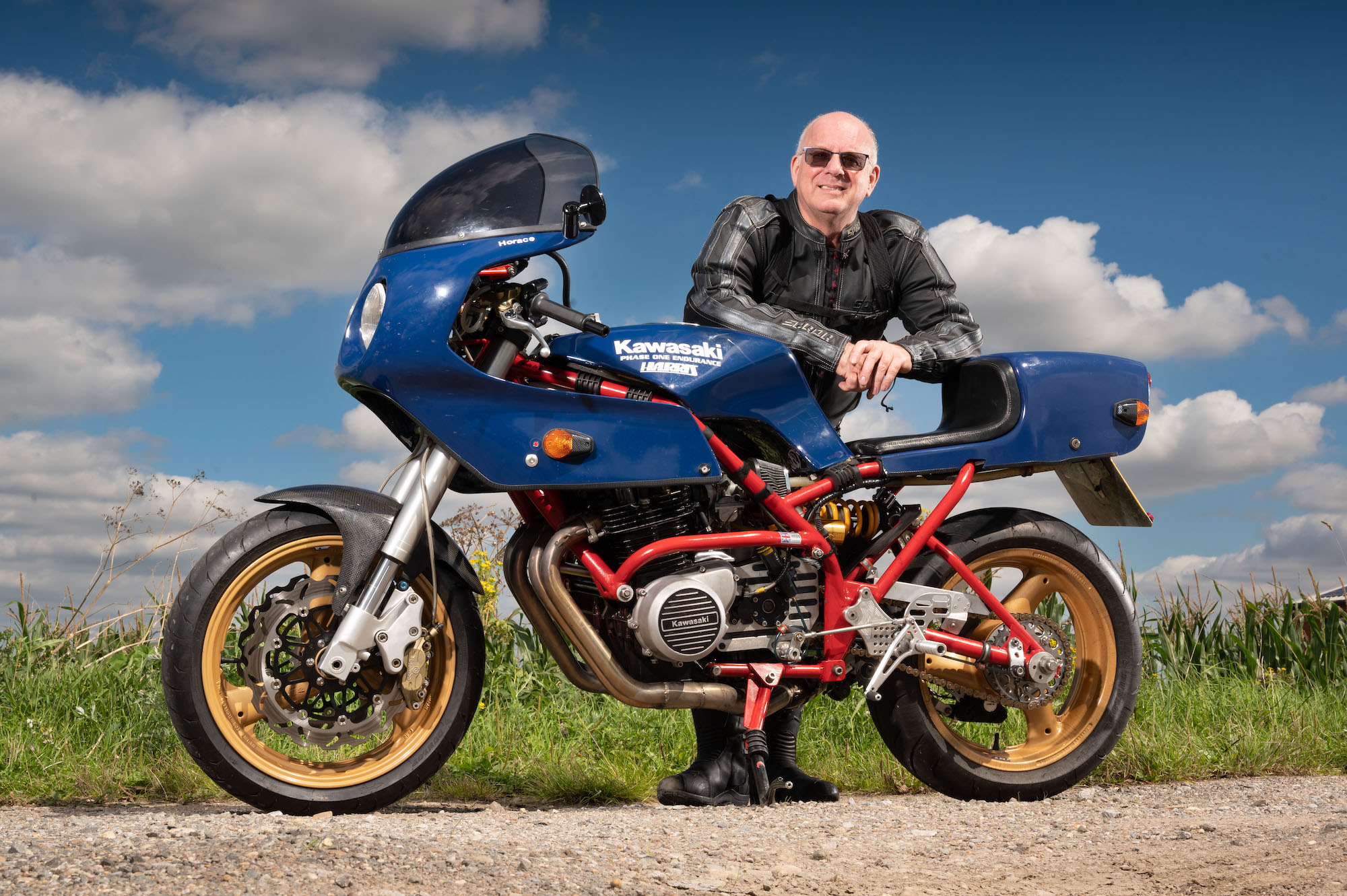In early 1960, Terry Bedford bought his first Moto Rumi scooter. He loved it so much that within a couple of years he had bought two more and, astonishingly, he still has them all stored and lovingly restored at his home in Hertford.
The Moto Rumi was his third bike, having previously owned a secondhand James 125 and then a Lambretta 150.
The first Rumi model was a 1959 Tipo Sport, and it was love at first site. However, he made the purchase with some trepidation because the Moto Rumi company had already gone into liquidation and “the back up from the dealers had gone”.
The Rumi organization was formed at the beginning of the century in Bergamo, Italy, by a sculptor and painter Donnino Rumi and it originally supplied cast components to the textile machinery industry.
At the outbreak of the Second World War, Rumi became involved in the manufacture of armaments, miniature submarines and torpedoes.
And in 1950, Rumi decided to get involved in the manufacture of lightweight motorcycles and later scooters.
Donnino Rumi went back to his first love of being an artist
Rumi went into liquidation in the early 1960s and Donnino Rumi went back to his first love of being an artist.
They do say that beauty is in the eye of the beholder and many would argue that the Moto Rumi isn’t the easiest of machines on the eye, looking, as it does, a little like a caricature of itself.
But Terry really appreciated its design. The entire body (with the exception of the front forks, crash rails and leg shields) were produced in cast aluminium with the front and rear castings bolted to the engine to form a monocoque. This resulted in a light and rigid construction. The rear swinging arm, chain case and silencer box were also constructed in cast aluminium.
Terry doesn’t recall how much he paid for the Tipo Sport, but he knew he had bought a Donnino Rumi masterpiece and had no doubt it was “money well spent”.
He was still in his teens and a student at the time but the purchase clearly didn’t break the bank.
The ride was “smoky and noisy” but the Rumi was always reliable. The bike is rather obscure, so much so that “at shows people who have never seen one before are quite fascinated by it”.
He bought it red and then hand-painted it yellow but it has since been resprayed silver, which is quite fetching.
The only other modification was the addition of a stop lamp in the early days. The Italian manufacturers didn’t think such safety devices were a necessity back in the late 1950s.
“I would have liked to have fitted a good starter motor too but that’s impossible to do. I’m afraid I still have to give it a couple of good kicks to get it going.”
If he does need to work on it he gets classic spare parts from the Moto Rumi Club or online and very occasionally he gets bits fabricated to order.
It gets plenty of TLC and is still running pretty well. “Of course it’s been restored but with respect for its age.
“I only ever ride it at shows nowadays so it’s pretty easy keeping up the maintenance and keeping it in good running order.”
Amazingly, the Rumi has only done 12,155 miles since it was manufactured back in 1959 – that’s around 260 miles a year.
Terry explained: “I lost all the documents relating to this scooter so I don’t know the original mileage. I used to drive around London quite a lot in the 60s when I first got it, but it’s never done a lot of mileage. And certainly even less since it was restored.”
Terry is a member of the Moto Rumi Club which is patronised by around 100 Rumi owners from all over the world.
One of the rare bits of Moto Rumi documentation that Terry retains is a receipt from 1965 for a second Rumi which he bought from Chessington Scooters of Surbiton in Surrey – it cost him £10!
The Formichino was know as “the little ant”
He has since sold that one on but in the 1970s he bought a Bol D’or for £100, which he still owns along with another incomplete machine which is now a fully restored Formichino. All three scooters are now restored and street legal.
The Bol d’Or was named after the Bol d’Or 24-hour race at Montlhery, France, which Rumi won in 1957, 1959 and 1960 while the Formichino was know as “the little ant”.
He is justifiably proud of his collection: “I have all three models that Rumi produced. They all look the same but they have small but significant differences.
“The Formichino with 8in wheels and a small carburettor, then my original Tipo Sport with 10in wheels and a larger carburettor and the Bol D’or with twin carbs.
“They are all good in their own way. I can’t say I have a favourite. I love them all!”
Terry’s family can’t understand his infatuation with the Moto Rumi
Married with two children and two grandchildren, the family can’t quite understand Terry’s Moto Rumi infatuation: “They think I’m nuts. I’m sure they like them though.”
He would never part with the bikes but estimates if they were offered for sale they would fetch up to £8,500.
As for his favourite bike to own, all Terry dreams of, you guessed it, is “just another Rumi”.
Despite his devotion to the Rumi marque, Terry speaks in awe of some of his fellow Moto Rumi Club members.
He explained: “A lot of these guys have had their bikes since new. They are truly devoted.
“The chairman Paul Stokes for example went to the trouble of tracking down and buying back the Rumi he owned years ago. Incredible!
“I fear the Moto Rumi will die off”
“But I really feel we need to get knowledge of the Moto Rumi out into the wider biking community.
“We have no new people getting involved and there is a real danger that the Moto Rumis that still exist will end up as dusty old, unused and unloved museum pieces before too long.
“I fear the Moto Rumi will die off with their rather ageing owners, and that would be incredibly sad.”
The Moto Rumi Club is always keen to attract new members with a fascination for and interest in Moto Rumi scooters.
He concluded: “I’ve had my Moto Rumi for such a very long time – 57 years this year – but it’s really been worth it. It’s a relationship which has endured the test of time.”
